Wildcat Cartridges
22-250 Ackley Improved
column By: Layne Simpson | December, 24
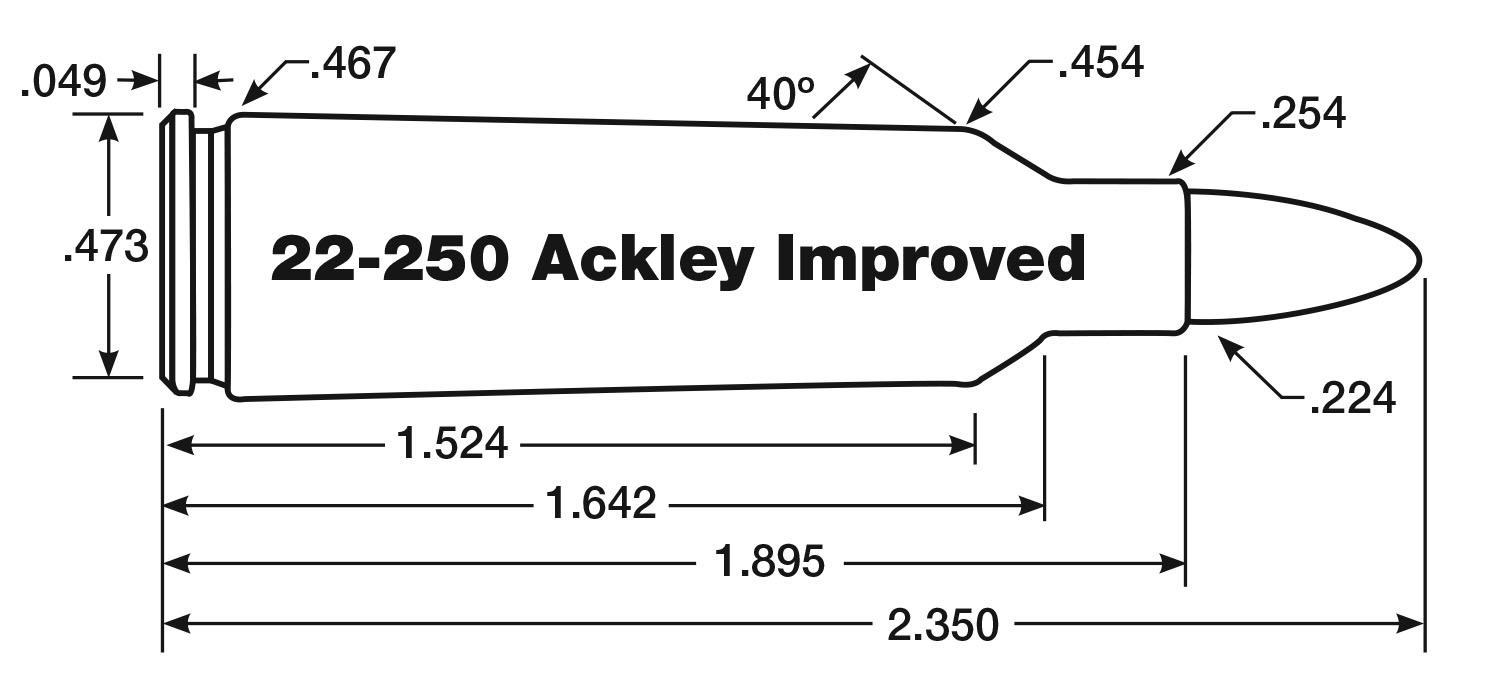
We may never know for certain who was first to fireform the 22-250 case to the improved shape with minimum body taper and sharper shoulder angle. In his Handbook For Shooters & Reloaders, P.O. Ackley included two versions. One has less body taper than the standard 22-250 case, but the shoulder angle remains the same at 28 degrees. The version created by Jerry Shannon of Spanaway, Washington, was the same except for a shoulder angle of 35 degrees. Nowhere does Ackley mention an improved 22-250 with his signature 40-degree shoulder, and yet, he is often credited with having one. The Nosler Reloading Guide 8 describes the cartridge as the “22-250 Remington Ackley Improved” and the barrel on my rifle has the usual “.22-250 AI” engraving.
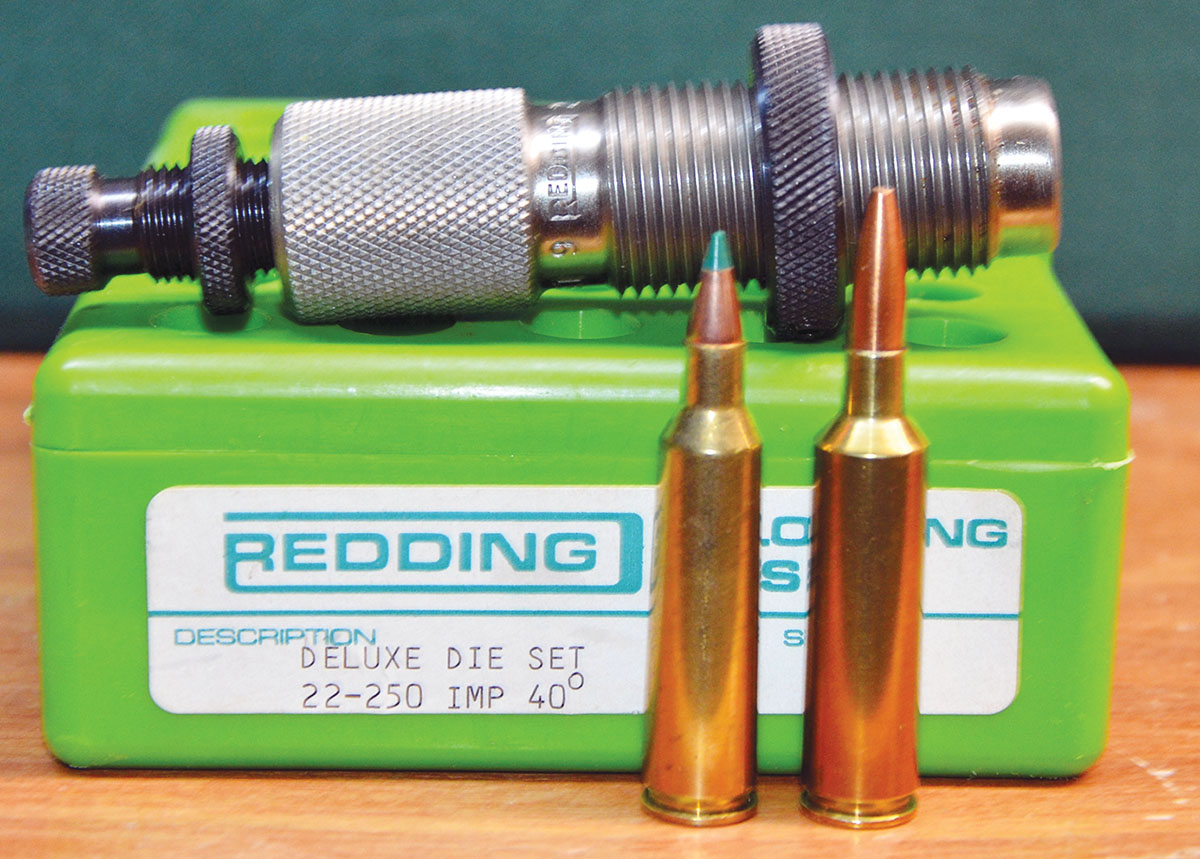
Of several custom switch-barrel rifles I have, one built by Kenny Jarrett on a Remington Model Seven action ranks high among my favorites. The barreled action is pillar-bedded in a McMillan Kevlar-reinforced fiber-glass stock, the profile of which copies that of the walnut stock worn by the original Model Seven. In addition to the 22-250 Ackley Improved featured in this report, it has barrels in 243 Winchester Improved, 7mm-08 Remington and 308 Winchester. With its 1:10 rifling twist rate, the Jarrett 22-250 Ackley Improved barrel delivers excellent accuracy with bullets as short as the 40-grain Berger FB Varmint to those as long as the 60-grain Nosler Partition and 62-grain Swift Scirocco II. At reasonable distances, the latter pair has proven to be deadly on feral hogs and southern whitetail deer. With a pull weight adjustment range of 24 to 48 ounces, the Jewell stainless steel trigger is an excellent choice for a rifle used in both varmint shooting and big-game hunting.
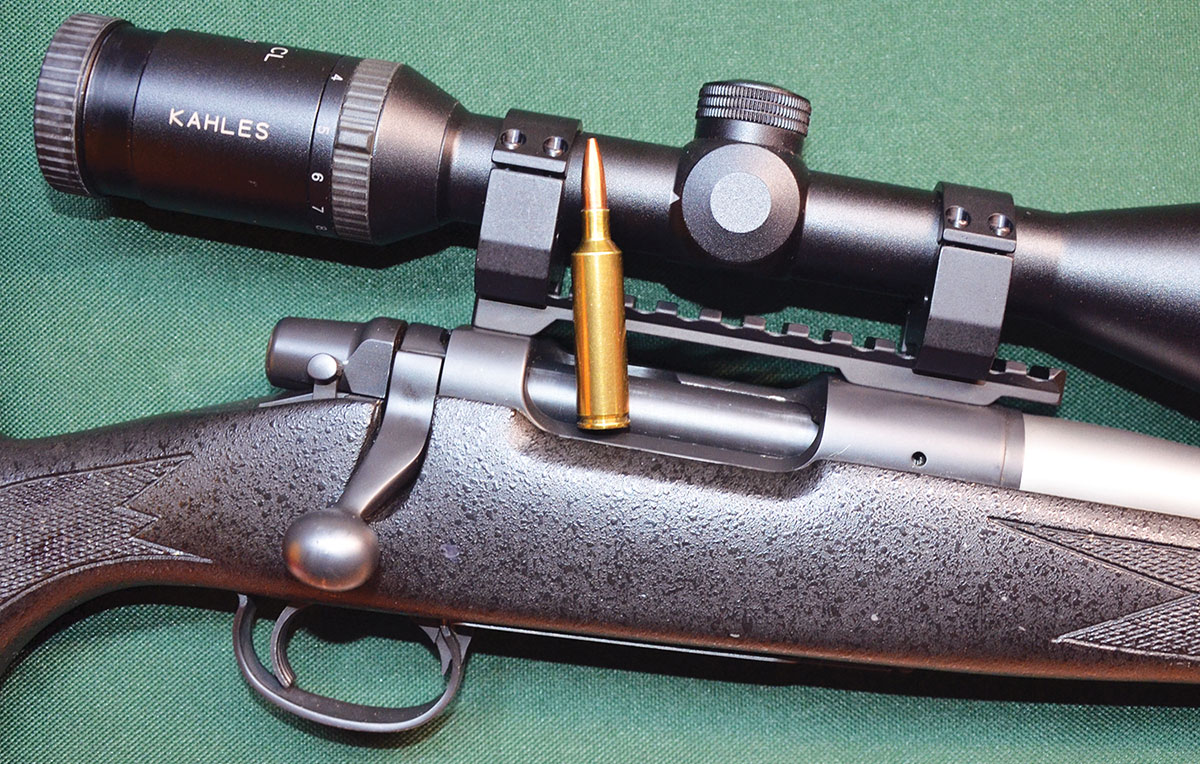
As specified by Ackley for his rimless cartridges, when a standard 22-250 round is chambered in my rifle, the neck/shoulder juncture of its case contacts the neck/shoulder juncture of the chamber. In addition to allowing factory ammunition to be fired, it simplifies fireforming virgin 22-250 cases to the Ackley shape. My fireform load consists of the 55-grain Nosler Ballistic Tip seated atop 39 grains of CFE 223, which is a maximum load for the standard 22-250 cartridge. Rather than wasting barrel accuracy life by shooting into a dirt bank, I use that load when shooting varmints and it is accurate enough to do so. Excessive case stretch during forming is eliminated by seating the Nosler bullet in the case to contact the rifling when a round is chambered. Ron Reiber, who was the head ballistician at Hodgdon Powders for many years, recommended lightly spraying each case with Hornady One Shot Case Lube. I have not tried that with the 22-250 Ackley Improved but I know from experience that it works great when fireforming the 22 Hornet case to the 22 K-Hornet shape.
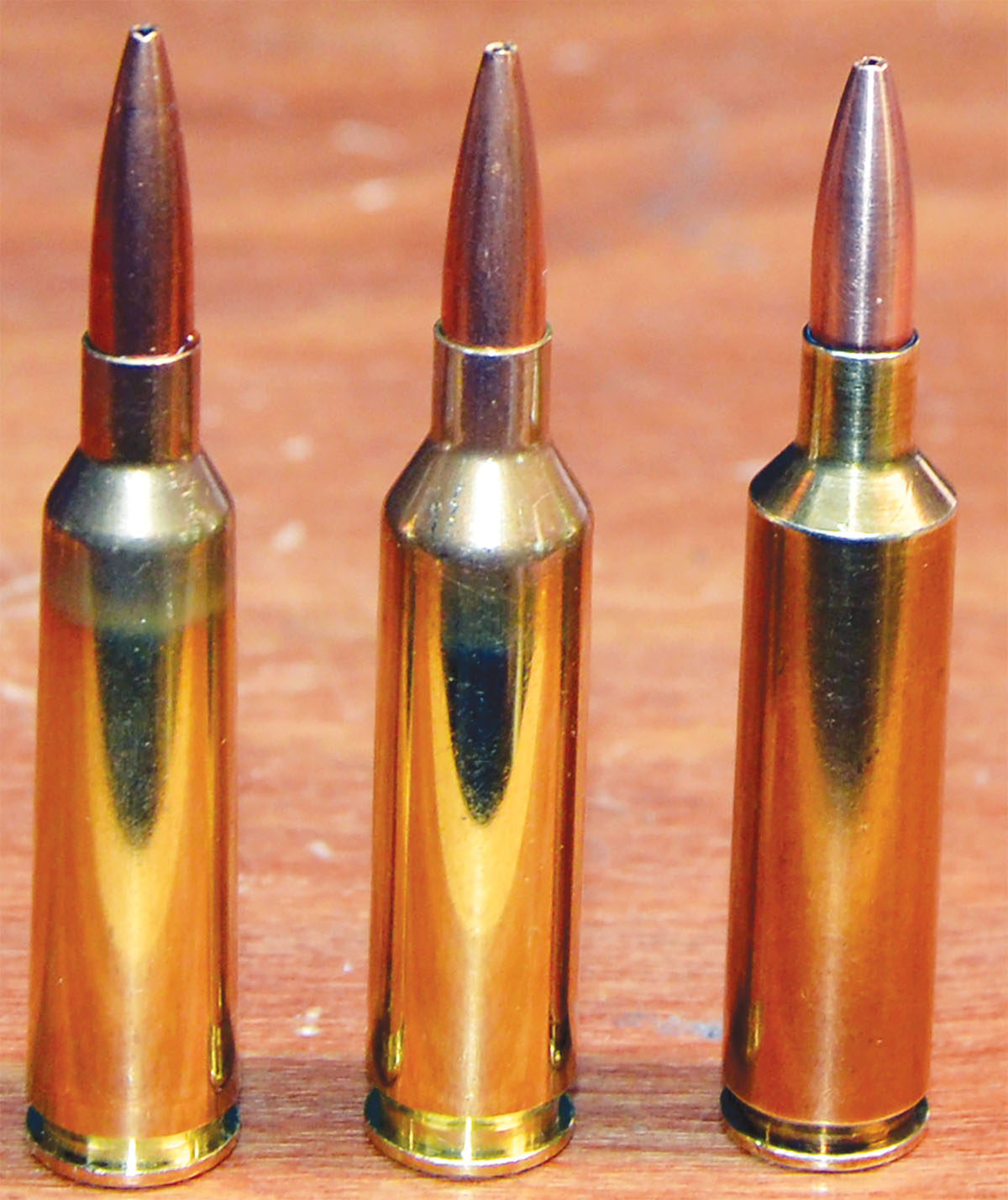
The reamer used to chamber my barrel cut a neck diameter of .255 inch or .004 inch larger than the neck of a Federal 22-250 case with a .224-inch bullet seated. Today, that would be described as a no-turn chamber. I have since switched to Lapua 22-250 cases and they average .252 inch with bullets seated, so outside-turning case necks is not required for those either. As we have come to expect of Lapua, quality is beyond compare.
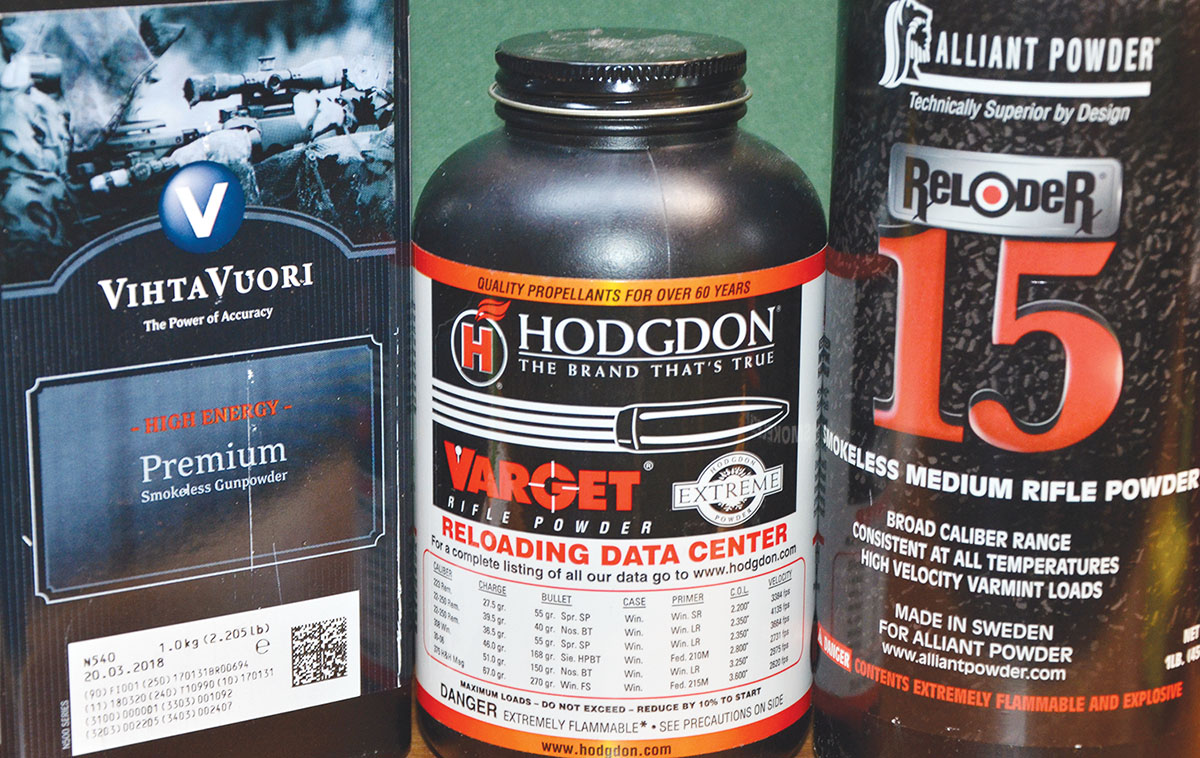
Federal Gold Medal 210M primers do an excellent job of igniting various powders that are suitable for use in the 22-250 Ackley Improved. I am always happy to walk into my reloading room with a bucket full of empty cases and see Vihtavuori N540, Reloder 15 and Varget sitting on the shelf and if push came to shove, I could get by with any of these. Some powders have become very difficult to find so having one or more alternatives in mind is a good plan. My list of candidates would begin with IMR-4064, which for many years was my 220 Swift powder. Others that immediately spring to mind are W-748, VV-N140, CFE 223, Power Pro Varmint and Superformance.
My rifle delivers excellent accuracy; a variety of bullet weights and flat trajectories combined with a good rangefinder make nailing long-distant targets easy. With the 40-grain Nosler Ballistic Tip exiting the muzzle at 4,200 feet per second (fps) and zeroed 2 inches high at 100 yards, it strikes dead on point of aim at 300 yards and about 8 inches low at 400. Zeroed the same, the 50-grain Ballistic Tip at 3,900 fps is 1 inch low at 300 yards and a couple of inches low at 400. Moving on to the 55-grain Ballistic Tip at 3,800 fps, respective drops below point of aim at those distances are 1 inch and 9 inches. Launch the 60-grain Ballistic Tip at 3,700 fps and those figures are pretty much the same as for its 55-grain mate. Respective 400-yard energy delivery for those four bullets is 420, 570, 625 and 670 foot-pounds and since all are still traveling a bit faster than 2,200 fps, expansion is still quite impressive. The drift at 400 yards for the four bullets in a 10-miles-per-hour side breeze ranges from 16 to 20 inches, so not much difference there.
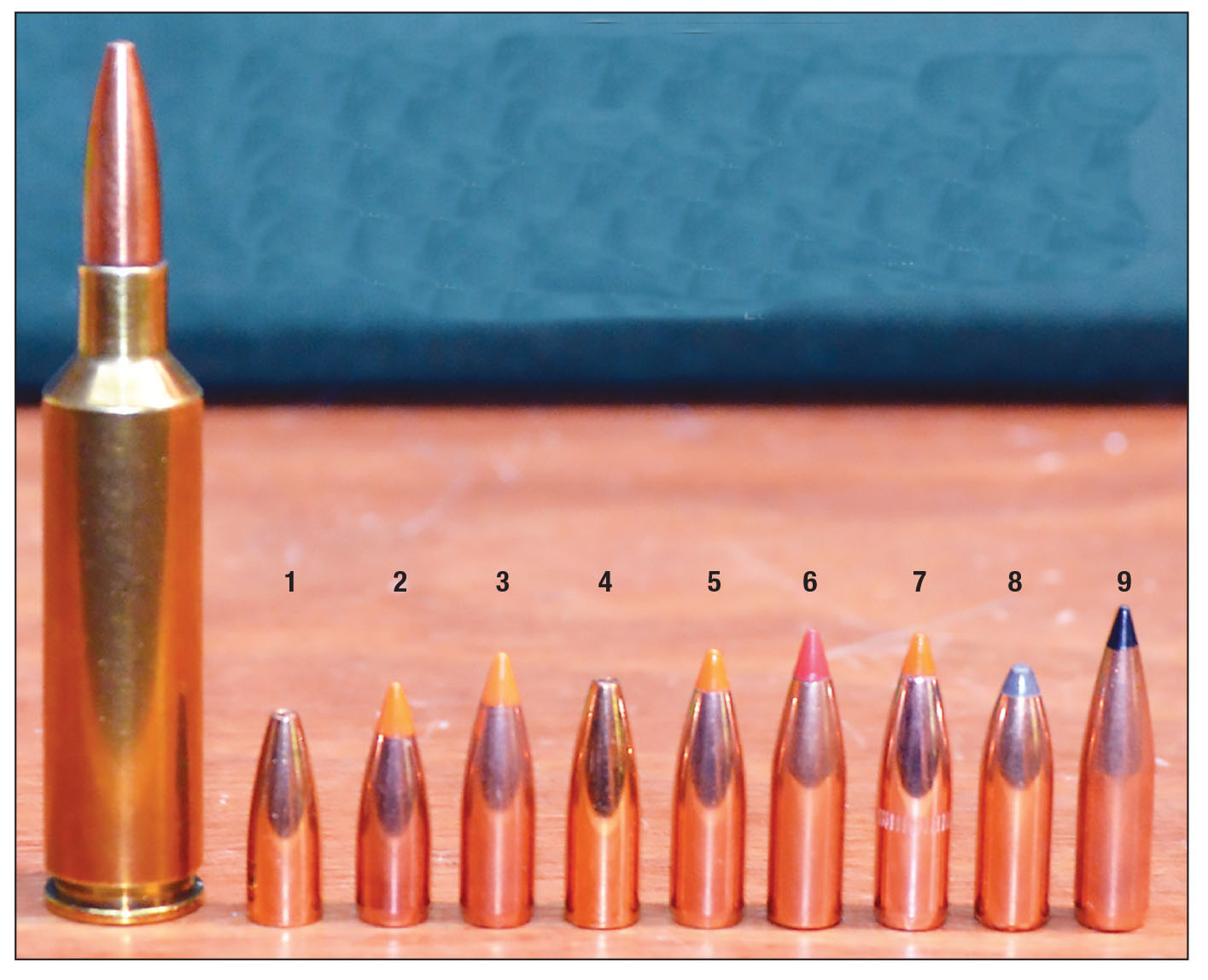
.jpg)


